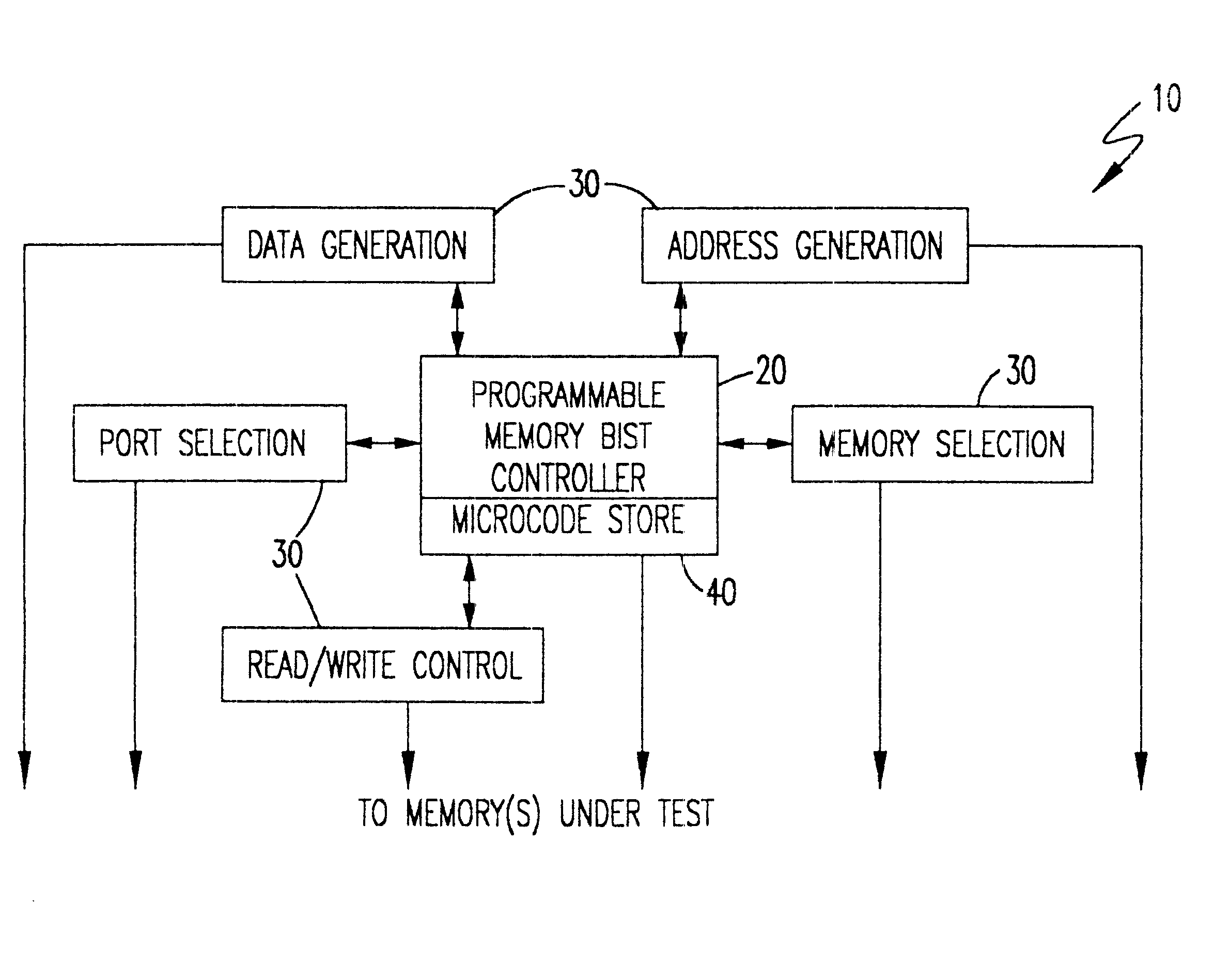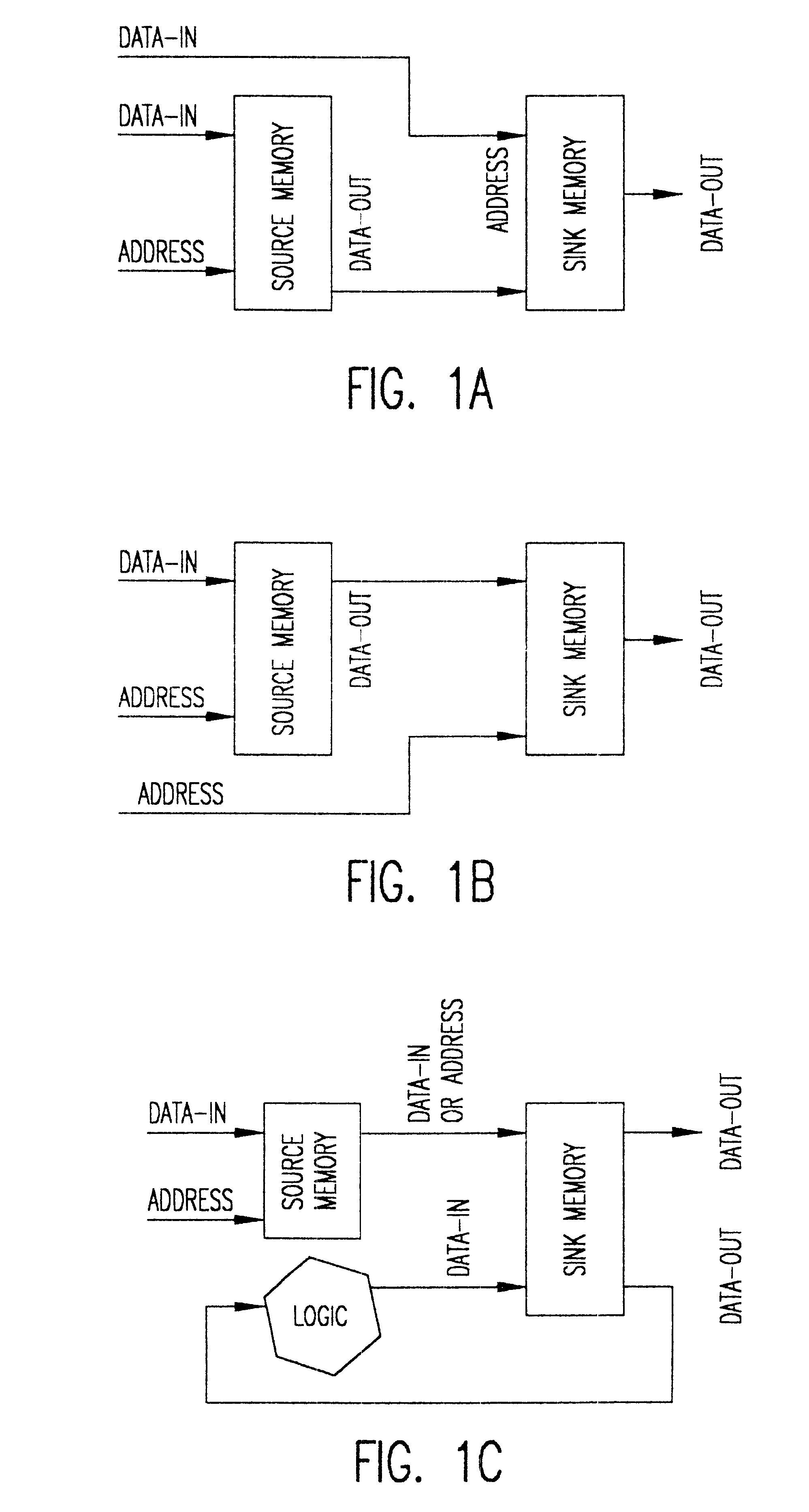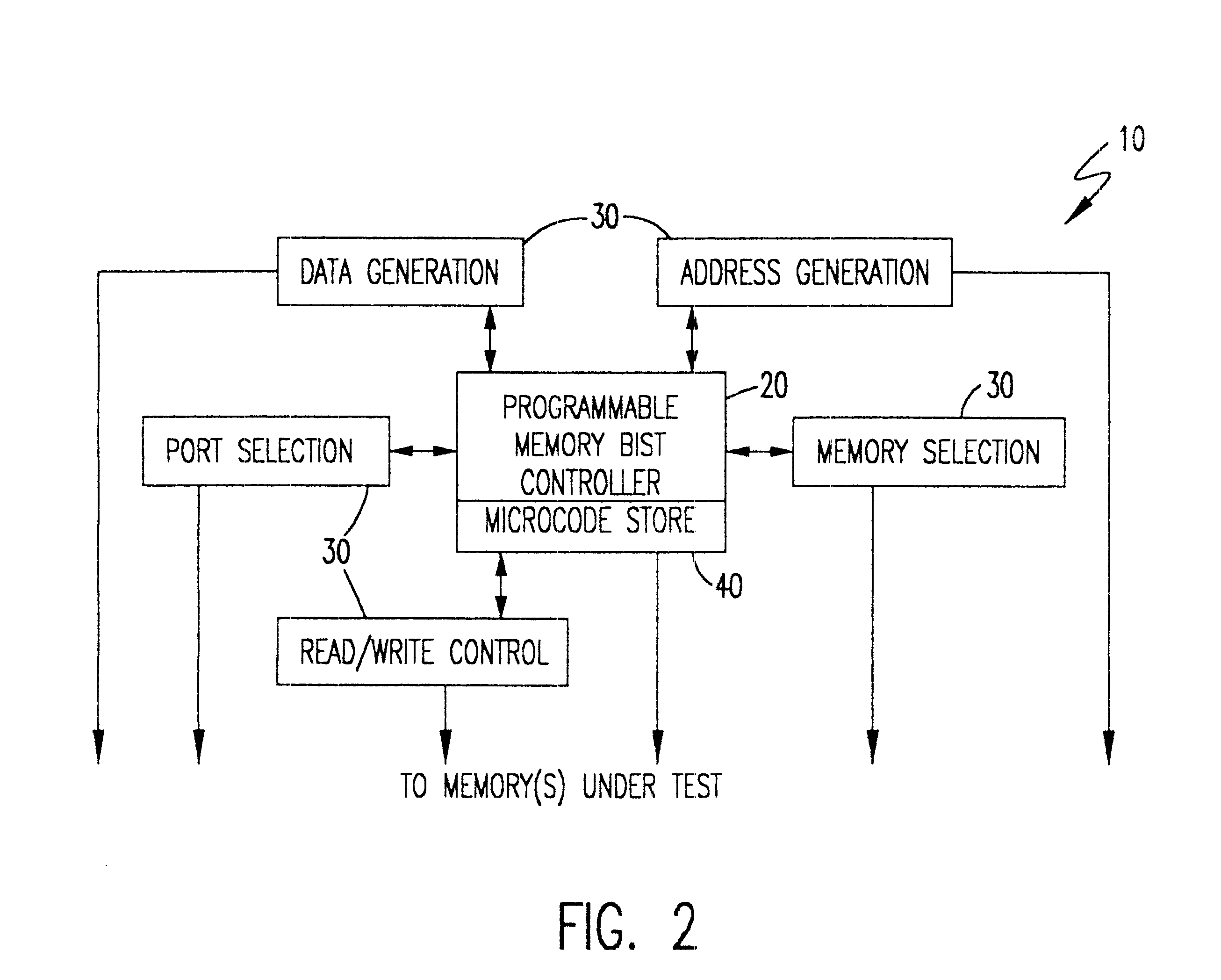Programmable memory built-in self-test combining microcode and finite state machine self-test
a programming memory and self-testing technology, applied in the field of memory structure testing, can solve the problems of memory cells, relatively delicate devices, and low process cost of fabrication, and achieve the effects of low process cost, small memory cell area, and low cost of fabrication
- Summary
- Abstract
- Description
- Claims
- Application Information
AI Technical Summary
Problems solved by technology
Method used
Image
Examples
Embodiment Construction
Referring now to the drawings, and more particularly to FIG. 4, there is shown a highly conceptualized diagram of the enhanced programmable memory BIST module in accordance with the invention. Some of the elements illustrated such as the instruction decoder 30 and microcode store 40 are substantially similar to the corresponding elements depicted in the programmable BIST architecture illustrated in FIG. 2 and discussed above. However, the microcode stored in microcode store 40 is altered somewhat from that used in the architecture of FIG. 2 as will be discussed below in connection with FIG. 5. The BIST controller 20 in accordance with the invention will be more fully discussed below in connection with FIG. 6.
A particularly distinctive feature of the BIST module 100 is the use of instruction generate modules 110 which comprise finite state machines (FSM). Conceptually, a finite state machine comprises a circuit which can assume any one of a finite number of states wherein changes bet...
PUM
 Login to View More
Login to View More Abstract
Description
Claims
Application Information
 Login to View More
Login to View More - R&D
- Intellectual Property
- Life Sciences
- Materials
- Tech Scout
- Unparalleled Data Quality
- Higher Quality Content
- 60% Fewer Hallucinations
Browse by: Latest US Patents, China's latest patents, Technical Efficacy Thesaurus, Application Domain, Technology Topic, Popular Technical Reports.
© 2025 PatSnap. All rights reserved.Legal|Privacy policy|Modern Slavery Act Transparency Statement|Sitemap|About US| Contact US: help@patsnap.com



